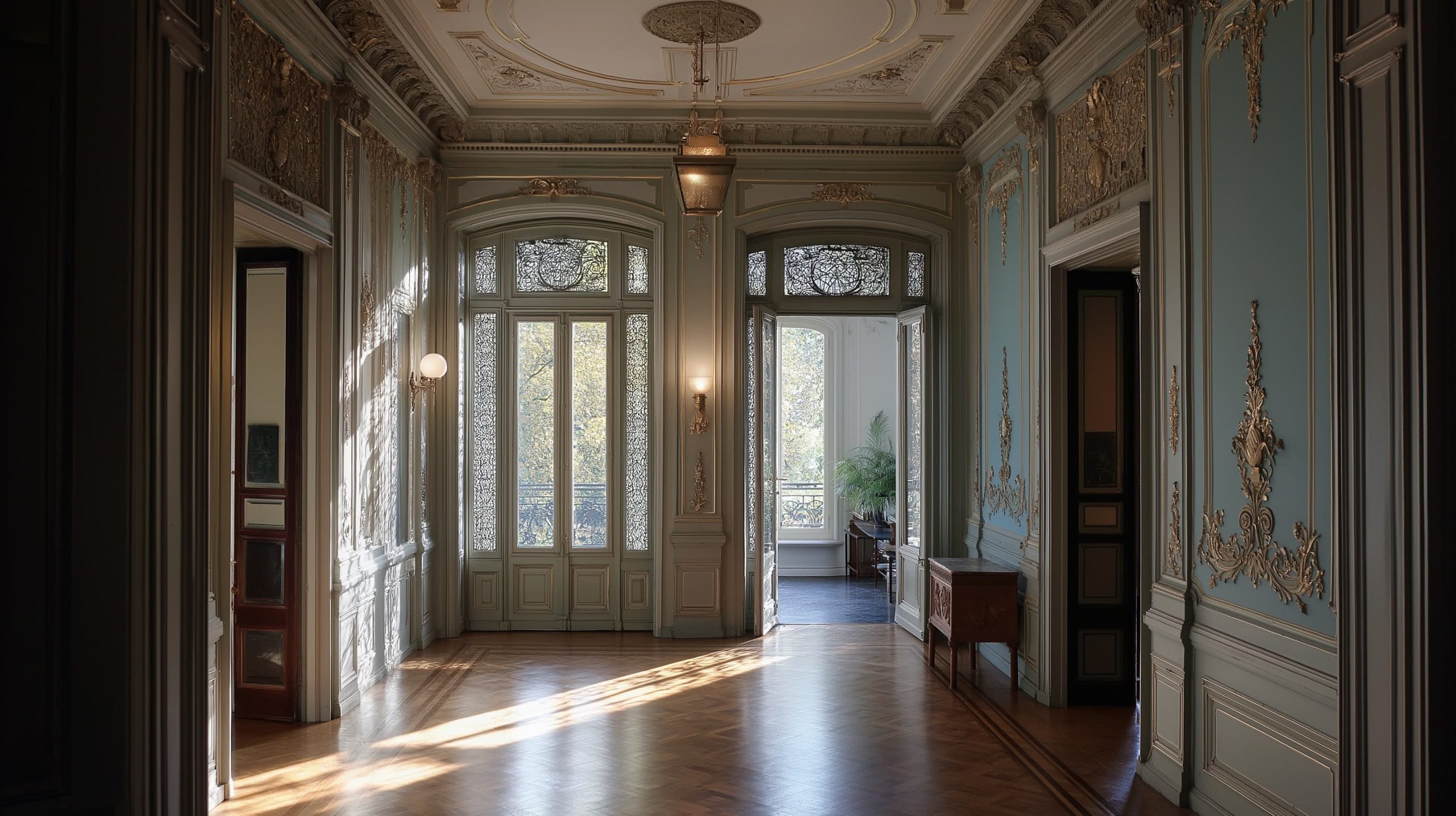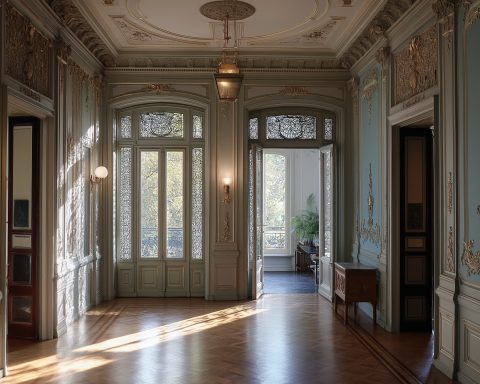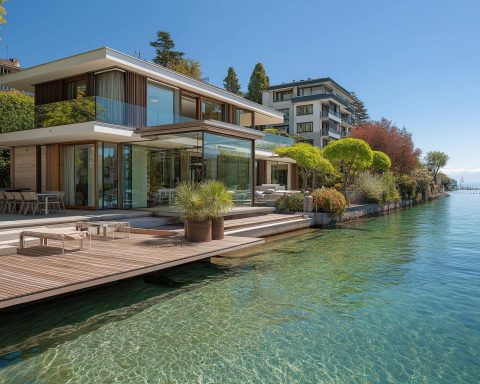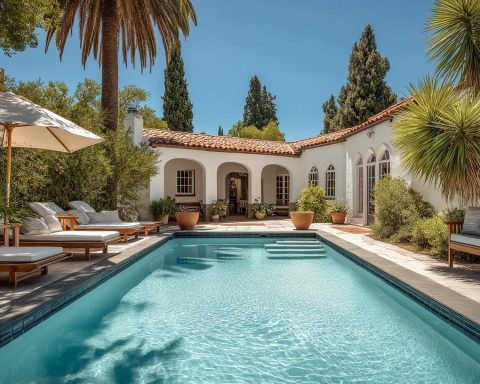Lausanne’s real estate market in 2025 stands out as one of the most resilient in Switzerland, marked by strong demand and limited supply. As the capital of Canton Vaud and a hub for international education, finance, and technology, Lausanne attracts a steady influx of skilled residents theluxuryplaybook.com. The city’s quality of life, presence of renowned universities (like EPFL and UNIL), and numerous multinational employers (e.g. the IOC, medtech and finance firms) drive consistent demand from expats, students, families, and corporations. About 80% of households in Lausanne are renters (owner-occupied housing is only ~20% of the stock) bcv.ch, reflecting a traditionally tight rental market. Below is a comprehensive look at current market conditions (residential and commercial), pricing trends and forecasts, investment opportunities, major developments, regulatory factors, comparisons with other Swiss cities, and demand trends shaping Lausanne’s real estate outlook.
Residential Market Conditions in 2025
Lausanne’s housing market remains very tight in 2025. Vacancy rates are extremely low – around 0.6% in mid-2024 for the Lausanne district bcv.ch – indicating a severe shortage of available homes. This scarcity has kept rents and prices high. Many tenants stay in their apartments for a long time: in Lausanne (and Geneva) roughly half of tenants have occupied their units for over 10 years, far above the 38% Swiss average ubs.com. This “lock-in” effect underscores how difficult it is to find new accommodation, as tenants cling to existing leases. In early 2025, rental demand surged due to population growth (including immigration); Switzerland saw record-low nationwide vacancy (1.08% in mid-2024) and rising asking rents pwc.ch pwc.ch. Lausanne mirrors this trend, with landlords able to raise rents on new tenancies by ~+2% year-on-year amid competition for units. However, existing regulated rents have seen only moderate increases, partly constrained by Switzerland’s reference mortgage interest rate, which was actually cut in March 2025. That rate drop will dampen rent hikes for sitting tenants in coming quarters ubs.com (since landlords must lower or hold rents when interest benchmarks fall, per Swiss rental law).
Home prices in Lausanne continue to be among the highest in Switzerland, having risen steadily over the past decade. The average transaction price for apartments in Lausanne was about CHF 15,500 per m² in Q1 2025 globalpropertyguide.com globalpropertyguide.com, placing it in the top tier behind Zurich and Geneva. More commonly, asking prices in mid-2025 range around CHF 12,000–13,000 per square meter for residential properties investropa.com neho.ch. For instance, June 2025 data show an average CHF 12,750 per m² (apartments ~CHF 13,413 and houses ~CHF 12,087 per m²) in Lausanne neho.ch. Prime neighborhoods (lakeside areas like Ouchy or upscale hillsides) easily exceed CHF 13,000/m² theluxuryplaybook.com. Price growth has been modest but positive recently – roughly +2% year-on-year for apartments in 2024 theluxuryplaybook.com theluxuryplaybook.com – as affordability limits and higher financing costs tempered the rapid gains of previous years. Single-family house prices have even plateaued or dipped slightly (around –0.5% to –0.6% in the last year) theluxuryplaybook.com theluxuryplaybook.com due to rising mortgage costs and buyer preferences shifting toward multi-unit or rental investments. Overall, Lausanne’s residential market in 2025 is characterized by stability at a high price level: demand far outstrips supply, keeping vacancies low and supporting prices, but the rate of price increase has moderated.
Housing supply remains constrained by geography and planning rules. Lausanne is a dense city with strict zoning and lengthy approval processes that limit large-scale development theluxuryplaybook.com. New residential construction has been modest – on the order of ~420 new units per year in 2024–25 in the Lausanne district bcv.ch – which is lower than in previous years. This slow inventory growth fails to keep pace with population needs, contributing to the structural supply deficit. The tight market conditions are further evidenced by strong tenant profiles and low turnover; institutional landlords in Vaud report high-quality, “sticky” tenants and minimal vacancy (≈1%–1.4%) in their Lausanne portfolios theluxuryplaybook.com. For investors, this translates to reliable rental income streams. Indeed, multi-family residential properties are in demand from investors again – as of 2024, quoted rents across Switzerland jumped ~6.4% in a year, and rental buildings became more attractive with the return of low interest rates ubs.com ubs.com. Lausanne’s combination of tenant stability and chronic undersupply makes it a particularly defensive, yield-friendly residential market, even as prices stay elevated.
Commercial (Office & Retail) Market Conditions in 2025
Lausanne’s commercial real estate sector in 2025 shows a two-speed dynamic: the city-center office market is very tight, while peripheral submarkets are expanding with new supply. In the city of Lausanne CBD, office vacancies are exceedingly low – only about 1.9% vacancy citywide, and just 1.5% of prime downtown office stock is available jll.com. In absolute terms, a mere ~12,300 m² of CBD office space was vacant at end of 2024 jll.com. This scarcity supports high rent levels: prime office rents in central Lausanne hold at roughly CHF 520 per m² per year (around CHF 43/m² per month) and have remained stable jll.com. Businesses seeking large contiguous offices in the core often face a dearth of options. Notably, a major refurbishment of the landmark Hôtel des Postes in central Lausanne is underway to deliver ~15,000 m² of modern offices by end-2025 – a rare injection of grade-A space in the heart of the city, which is expected to meet eager demand upon completion jll.com.
In contrast, the Lausanne region’s suburban office market has loosened somewhat as new developments come online. The overall office availability rate for the greater Lausanne region rose to 3.8% at end-2024, up from 3.2% a year prior jll.com. This increase is largely due to several large projects in West Lausanne (Crissier/Renens) finishing construction jll.com. For example, a new “eco-district” in Chavannes-près-Renens delivered substantial new office space, contributing to higher vacancies in that submarket jll.com. The Lausanne West/Crissier zone now sees office vacancy around 15% jll.com – notably higher than the city average – as developments like “Le Closel” (4,000 m²) and “Quartier Horizon” (~7,000 m²) have recently been completed with space still on the market jll.com. While this uptick in vacancy represents a short-term absorption challenge, it also reflects growth: West Lausanne is in an expansion phase, delivering modern, large-floorplate offices that central Lausanne cannot. The Malley–Renens area in particular is booming with new projects. A major mixed-use complex “Central Malley” is under construction, targeting completion by 2026 with 10,000+ m² of offices; already 80% of its first building (A3) has been pre-leased one year before delivery jll.com. Despite the higher vacancy in these outer areas, tenant demand remains solid and is gravitating toward the new offerings: companies are attracted to the sustainable design, accessibility, and larger floor plates of these projects jll.com. Over time, analysts expect the surplus space to be absorbed, given Lausanne’s growing economy and the preference of some firms to relocate from older buildings into new green-certified offices jll.com.
Other commercial segments reflect Lausanne’s healthy economy: retail property in prime zones benefits from the city’s affluent population and tourists, though secondary retail locations face pressure (as e-commerce and Geneva’s pull take effect). The industrial/logistics market around Lausanne (e.g. in peripheral communes) is fairly tight as well, given limited industrial land in the region. Overall, Lausanne’s commercial real estate in 2025 can be summarized as central scarcity vs. peripheral growth – a tightly constrained CBD with high rents and virtually no large vacancies, versus an evolving periphery where new business districts (like in Renens/Malley) are adding capacity and moderately pushing up vacancy rates in the short run jll.com. Importantly, even the new supply is not excessive by historical standards. (Across Switzerland, office stock growth is slowing – projected ~1.0% annual expansion in major cities through 2027, which is 26% less than in recent years jll.com jll.com.) Lausanne’s share of new construction remains cautious, meaning the market is unlikely to be oversupplied long-term.
Pricing Trends and Forecasts
Property prices in Lausanne have been on a long upward trajectory, and 2025 continues that pattern with some moderation. In the residential sector, both UBS and Wüest Partner forecast Swiss house prices to rise around 3–4% in 2025 globalpropertyguide.com globalpropertyguide.com, but high-cost regions like Lausanne are expected to appreciate at a more modest rate. In fact, recent data show Lausanne’s apartment prices barely rising (+0.3% YoY in Q1 2025) globalpropertyguide.com, underperforming the national average (~+4.4% YoY) which was boosted by surges in other regions. This suggests that Lausanne’s prices may be nearing a plateau relative to local incomes. For 2025–2026, analysts predict low single-digit growth for Lausanne homes – on the order of +1% to +3% per year estimation-bien-immobilier.ch – assuming interest rates remain low and no major shocks occur. The Canton Vaud real estate outlook indeed anticipates +1–2% price growth for apartments in 2025 (and ~2% for houses) estimation-bien-immobilier.ch, essentially a continuation of 2024’s restrained increase. Key drivers supporting prices are the persistent supply-demand imbalance and cheaper financing (after the SNB’s rate cuts). By mid-2025, mortgage rates in Switzerland had fallen back under 2% on average, greatly improving affordability of credit investropa.com investropa.com. This financing boost, combined with population growth, underpins the positive outlook. However, given that Lausanne’s housing is already very expensive (price-to-income ratios are stretched) and broader economic growth is modest (Swiss GDP ~1.2%–1.4% forecast for 2025–26 pwc.ch), no explosive price jumps are expected – rather a “stabilization at a high level” is likely ubs.com ubs.com.
In the commercial property sector, office rents in Lausanne’s city center should remain high and could even inch up due to the scarcity of space. Prime office rent (CHF 520/m²/year) has been flat for some time jll.com, but any new Grade A supply (like the Hôtel des Postes redevelopment) might set a new benchmark if competition for those floors sparks bidding. In peripheral office submarkets, the influx of new buildings may put downward pressure on rents in the short term – landlords could offer incentives to fill vacancies (with West Lausanne’s availability at 15% jll.com, rent concessions may be needed to attract tenants until absorption catches up). Over the next few years (2025–2027), as the Malley/Crissier offices lease up, we can expect the effective rents there to gradually firm again, especially for properties with green building certifications and good transit links (which are already drawing interest) jll.com.
Lausanne’s investment property yields are likely to stay low (indicative of high values), consistent with other Swiss metros. For example, Geneva’s residential rental yields are around 3.5% and steady investropa.com investropa.com; Lausanne’s would be of similar magnitude – generally 3–4% – given the strong prices and reliable rental stream. With 10-year Swiss government bonds near zero, real estate remains attractive for institutional investors seeking returns. Forecasts by Wüest Partner see Swiss apartment prices rising ~3.6% in 2025 globalpropertyguide.com, and UBS’s analysts likewise foresee 3–4% gains globalpropertyguide.com, but caution that affordability limits “should limit any major price increases” globalpropertyguide.com. Beyond 2025, much will depend on interest rates (a return to negative rates, as discussed in Switzerland, would further fuel property prices pwc.ch pwc.ch). Conversely, if inflation or global factors force higher rates, Swiss real estate might cool. As of 2025, the baseline scenario is moderate continued growth for Lausanne property values, with no sign of a downturn. UBS’s Real Estate Bubble Index for Switzerland remains in the “moderate risk” zone in 2025 ubs.com ubs.com – Lausanne is identified as a high-price “hotspot” but not in a severe bubble territory. Thus, barring external shocks, the outlook for the next few years is that Lausanne’s real estate will appreciate gradually and maintain its status as a stable, high-value market.
Investment Opportunities and Key Growth Areas
Despite high entry prices, Lausanne presents several investment opportunities thanks to its growth areas and stable returns. Investors (both Swiss institutional and qualified foreign buyers) are especially drawn to long-term rental assets in Lausanne, citing the city’s low vacancy, solid tenant base, and “safe haven” stability theluxuryplaybook.com theluxuryplaybook.com. Yield-focused buyers find that multi-family apartment blocks in Lausanne’s neighborhoods can deliver consistent income with minimal vacancy risk. The fact that rents for new leases have been rising (to catch up with demand) means landlords can achieve uplift on turnover; for instance, asking rents nationally were ~+2.2% higher in early 2025 than a year before ubs.com. This trend, combined with the recent dip in financing costs, has improved the calculus for leveraged investors. As low interest rates returned in 2024–25, cap rates compressed and property transaction volumes picked up across Switzerland practiceguides.chambers.com. In Lausanne, there were notable portfolio acquisitions and development site deals in 2024, and this momentum carries into 2025.
Geographically, key growth areas in and around Lausanne include:
- West Lausanne (Renens/Malley/Crissier) – This corridor is undergoing a transformation with new mixed-use developments. It hosts the emerging “Quartier des Entrepôts” and Central Malley projects, new office campuses, and residential blocks near the Malley transit station. The area is attractive for businesses due to modern facilities and highway/train access, and for investors because prices are slightly lower than Lausanne center while future upside is strong. The office availability here (15% after new completions) jll.com actually signals opportunity: companies seeking large, modern offices can find them in West Lausanne at competitive rents, suggesting this submarket will grow into a major business hub. For real estate investors, early acquisition in these projects could yield good returns as occupancy builds. The Malley-Gare district is also set to gain a new tram connection and additional housing, further boosting its appeal.
- Lausanne North (Blécherette/Epalinges) – Areas towards the north (around Blécherette, Vennes, Epalinges) are seeing growth through science parks and suburban residential communities. The Biopôle in Epalinges (a life sciences park) has expanded, attracting biotech firms and creating demand for both offices and upscale housing nearby. The planned M3 metro will terminate at Blécherette (north edge of Lausanne) ge.ch ge.ch, spurring new development along its route. Investors might find land or redevelopment opportunities in these northern suburbs as the city’s transit infrastructure improves connectivity.
- City Center Redevelopments – Within Lausanne proper, opportunities are scarcer, but selective projects exist where older buildings can be refurbished or repurposed. A prime example is the Hôtel des Postes renovation mentioned earlier, turning an historic postal building into high-end offices jll.com. Similar centrally located assets, if acquired and upgraded, can tap into the unmet demand for modern space in the core. Additionally, niche segments like serviced apartments or student housing near the university campuses are under-supplied and present investment potential (the student population is large and growing, and often struggles to find accommodation).
- Lakefront and East Lausanne (Pully/Lutry) – The eastward suburbs along Lake Geneva remain luxury residential enclaves. While largely built-out, these communes (Pully, Lutry, etc.) see consistently high demand from wealthy buyers. Property in these areas (with lake views) frequently commands CHF 14,000–16,000+ per m² estimation-bien-immobilier.ch estimation-bien-immobilier.ch, on par with Geneva’s best. Investors in high-end villas or condos here bank on capital preservation and long-term appreciation. New supply is very limited, but occasionally small lot subdivisions or villa replacements come up for sale.
From a sector perspective, sustainable and energy-efficient properties are a notable opportunity. Switzerland has ambitious environmental regulations (e.g. stricter CO₂ laws and a push for net-zero buildings). Demand for energy-efficient homes is projected to increase ~20% by 2025 nationally investropa.com investropa.com. In Lausanne, new developments like the Plaines-du-Loup eco-quarter (see next section) are built to advanced green standards, and such properties are highly sought after by both renters and buyers. Investing in retrofitting older buildings in Lausanne (adding insulation, heat pumps, solar panels) can also pay off, as tenants/owners are willing to pay a premium for lower operating costs and compliance with upcoming regulations.
Overall, Lausanne’s “controlled inventory” and high tenant quality make it attractive for long-term investors theluxuryplaybook.com theluxuryplaybook.com. The city offers predictable returns with low volatility, which is appealing compared to more cyclical markets. Key growth areas in the west and north, bolstered by infrastructure projects, provide the main avenue for development-led investment gains. Meanwhile, core assets in Lausanne remain a defensive play – albeit with lower yield – ideal for wealth preservation and steady income.
Notable New Developments and Infrastructure Projects
Lausanne is undergoing several significant developments that will shape its real estate landscape in coming years. Below are some of the major new projects in residential, commercial, and infrastructure categories:
- Écoquartier des Plaines-du-Loup: This is one of the most ambitious residential developments in Lausanne’s history. Plaines-du-Loup is a new sustainable neighborhood being built on a 30-hectare former airfield site in the north of the city. Phase 1 opened in 2022, and by 2034 it will host around 8,000 residents and 3,000 jobs on site lausanne.ch lausanne.ch. The project emphasizes ecological and social sustainability: 30% of the housing will be government-subsidized, 40% at mid-range “price-capped” rents, and 30% free market units lausanne.ch. It includes parks, schools, sports facilities, and community centers. Plaines-du-Loup is designed to meet the “2000-watt society” goals (very low energy use per capita) with cutting-edge energy-efficient construction lausanne.ch. For transport, it will be well connected – notably, the planned M3 metro line will link the district to the city center by ~2031 ge.ch ge.ch, and the metro station will be integrated into the neighborhood. This development is key to easing Lausanne’s housing shortage: it will deliver thousands of new apartments (many affordable) in stages. As of 2024, the first residents have moved in, and additional buildings are under construction. Property investors are watching Plaines-du-Loup closely; although much of it is city-driven with non-profit cooperatives and pension funds, its success could spur similar projects in the region.
- Malley District (Renens/Prilly): West of Lausanne’s center, the Malley area (straddling the communes of Renens, Prilly, and Lausanne) is being transformed from old industrial land into a modern mixed-use district. The showcase is “Central Malley”, a large development featuring offices, retail, and residences. Construction is underway, with completion of major components expected by 2026. A number of tenants have pre-leased space (e.g. 10,000 m² of offices already committed) jll.com, indicating strong interest. Adjacent to Central Malley is the Malley-Gare area, which has seen the opening of the Vaudoise Arena (a new ice hockey and events stadium) and new apartment blocks. The Quartier du Closel and Quartier Horizon (also in western Lausanne) are other recently completed projects adding commercial space jll.com. Malley’s development is supported by transport investments: a new tram line is being built to connect Lausanne-Flon (city center) to Renens, running through Malley. This Tramway t1 is slated to open around 2026, greatly improving connectivity with a tram every 6 minutes and a 15-minute ride from Renens to downtown fr.wikipedia.org axes-forts.ch. The Malley district, once fully realized, will provide a significant amount of new housing (including some student accommodations), offices, and leisure facilities, effectively creating a second urban center for Lausanne. This takes pressure off the historic center and distributes growth westward.
- Lausanne “Pôle Gare” (Station Hub) Expansion: The city’s main railway station is undergoing a decade-long expansion and modernization as part of the federal rail infrastructure plan (Léman 2030). Construction began in 2021 on a CHF ~1.3 billion overhaul ge.ch. The project will widen and lengthen platforms, add a third subway passage, and nearly double daily passenger capacity to handle projected traffic by 2030 ge.ch ge.ch. By 2029, all five new longer platforms will be operational, allowing 400-meter trains (more seats) to serve Lausanne ge.ch. Importantly, the station will connect directly underground to the metro lines (M2 and future M3) ge.ch, creating a seamless multimodal hub. Surrounding the station, the city plans to remake the Place de la Gare into a pedestrian-friendly plaza and encourage new development in the station district. The “Pôle Gare” encompasses several linked projects: aside from the station itself, there are plans for new office buildings, hotels, and retail in the immediate vicinity once rail construction allows. This hub is considered “the chantier of the decade” for Lausanne, and by stimulating improved accessibility, it is a catalyst for urban redevelopment in the core ge.ch ge.ch. We can expect property values around the station to benefit from these improvements. For instance, sites south of the tracks may see office or mixed-use high-rises in the future, taking advantage of the enhanced connectivity and foot traffic.
- Metro Line M3 and Other Transit: Alongside the station upgrade, Metro Line M3 is a critical infrastructure project. M3 will run from the main station north to Blécherette through key neighborhoods (via a tunnel under city center). It’s planned to open by 2031 ge.ch. This will relieve the over-capacity M2 line and open new areas for transit-oriented development, especially near planned M3 stations (e.g. Chauderon, Beaulieu, and towards the north end). Additionally, Line M2 itself is being extended and realigned at the station. Lausanne’s tram line (mentioned above) and ongoing improvements to the RER Vaud suburban rail (e.g. more frequent trains to suburbs) are also boosting regional mobility ge.ch ge.ch. For real estate, these transit projects mean previously peripheral locales become more accessible and attractive for projects – e.g. vicinity of future M3 stops may see new housing or offices proposed as investors anticipate better transit service.
- Other Developments: Lausanne has other notable projects such as the Métamorphose initiative, which besides Plaines-du-Loup included a new football stadium at Stade de la Tuilière (delivered in 2020) and a new aquatic center at Vidy. The Beaulieu district (site of the Palais de Beaulieu convention center) is being revamped, with parts converted to host the canton’s law courts and possibly new residential units in the surrounding area. In the north-west, an expansion called “Quartiers Ouest” is in planning to add housing in suburbs like Chavannes and Crissier to support the university and innovation park growth. Moreover, private-sector projects are ongoing: for example, near EPFL campus, new student residences and an innovation park extension are underway to cater to the booming student and tech community. Each of these developments – whether civic infrastructure or private construction – feeds into the growth capacity of Lausanne. By adding housing supply (Plaines-du-Loup, Quartiers Ouest), adding commercial space (Malley, station area), and improving transport (metro/tram), they collectively aim to keep Lausanne livable and economically vibrant as its population increases.
Regulatory and Policy Environment
Switzerland’s stable and transparent regulatory framework extends to Lausanne’s real estate market, with several specific policies affecting investors and owners:
- Foreign Buyer Restrictions (Lex Koller): The Federal Law on Acquisition of Real Estate by Persons Abroad, commonly known as Lex Koller, places strict limits on foreign (non-resident) buyers purchasing Swiss property. In general, foreigners who are not Swiss residents cannot buy residential real estate in Switzerland (with few exceptions for certain vacation homes or if obtaining a special permit) practiceguides.chambers.com practiceguides.chambers.com. In Lausanne, which is not a designated tourist resort, this means the housing market is largely kept to Swiss citizens and resident foreigners with permits. This policy curbs speculative foreign investment and has arguably contributed to price stability (unlike global cities where foreign capital drives up prices). Foreigners can, however, buy commercial properties (offices, shops) without restriction, and foreign companies often lease space for their operations in Lausanne. Overall, Lex Koller ensures that Lausanne’s residential market is driven primarily by local demand and needs, not international speculative flows.
- Rental Market Regulations: Switzerland has a nuanced system of tenant protections and rent control mechanisms. Rental contracts are typically indexed in part to the national reference mortgage interest rate (which is set quarterly). When that reference rate falls, tenants have the right to request a rent reduction; when it rises, landlords can request an increase within formula limits. As noted, the reference rate decreased in 2025 following interest rate cuts, which will constrain landlords from raising rents on sitting tenants ubs.com. This regulatory feature tends to smooth out rent fluctuations – tenants don’t see sudden hikes unless justified by cost changes. Additionally, Swiss law mandates that existing tenancy rents can only increase under certain conditions (interest, inflation, value-adding renovations), so many long-time tenants in Lausanne pay significantly below today’s market rents. This creates the gap between “existing vs. new tenant” rents and contributes to low tenant turnover (people don’t want to lose an advantageous lease) ubs.com. For investors, it means rental yield growth comes mainly when tenants change or when the reference rate/inflation allow an increment. Lausanne’s authorities also monitor rent levels and have frameworks for addressing abusive rent increases, ensuring a balanced landlord-tenant relation.
- Local Planning and Housing Policies: The City of Lausanne actively uses urban planning tools to influence development. For large projects, the city often requires a portion of affordable housing or participates via cooperatives. We saw this in Plaines-du-Loup with mandated 30% subsidized units lausanne.ch. Lausanne (like Geneva and Zurich) is committed to preserving a stock of affordable and middle-income housing. The Canton of Vaud also has regulations encouraging this mix – for instance, cantonal laws (like the Loi sur le logement) can provide incentives or requirements for affordable housing in new developments. Moreover, Lausanne has height and density restrictions in many areas (to preserve sightlines and historical character), which limits overbuilding but also keeps supply tight. Any rezoning or large-scale project goes through public consultation and sometimes referendums, which can slow development but ensures community buy-in. As a result, developers must navigate a complex approval process, but once approved, projects in Lausanne have a secure legal foundation.
- Taxation and “Imputed Rent” Reform: Property owners in Switzerland currently pay tax on imputed rental value (Eigenmietwert) if they occupy their own home – essentially taxing the hypothetical rent they would pay. There is a growing political movement to abolish this imputed rent tax. In 2024–25, a proposal to eliminate it has gained traction. If the imputed rental value tax is abolished (pending approval by voters and cantons), it would significantly reduce the tax burden on homeowners and potentially boost homeownership demand pwc.ch. UBS analysts note that this change would further reinforce housing price growth, especially benefiting new construction, while possibly disadvantaging older properties needing renovation pwc.ch. Policymakers are also looking at accompanying measures (like limiting mortgage interest deductibility) to balance effects. Investors should watch this space, as a tax reform could shift buy vs rent incentives for households in Lausanne. On the topic of taxes: Vaud has its own real estate transfer taxes and capital gains taxes on property sales, which investors factor in. The canton also allows ‘pacte de précarité’ leases and other legal structures to promote housing affordability for lower-income tenants.
- Environmental and Building Regulations: Switzerland’s Energy Strategy 2050 and cantonal energy codes strongly impact real estate. From 2023, Vaud (and Swiss-wide) effectively banned oil and gas heating in new buildings, pushing for heat pumps, solar, and other renewable solutions investropa.com. Renovation of old buildings must include energy improvements (insulation, etc.) in many cases. These policies mean that in Lausanne’s future developments, energy efficiency is not just desirable but required. Developers advertise Minergie-certified (a Swiss sustainability label) buildings as a selling point. Additionally, the city has initiatives to encourage retrofits of older housing blocks (offering grants or low-interest loans for installing solar panels, for example). Such regulations serve both to reduce emissions and to keep older properties competitive in the rental market (since tenants increasingly value efficient homes with lower utility costs). Compliance with zoning is also critical – height limits, noise regulations (due to mixed residential/commercial zones), and heritage conservation rules can all affect what can be built or modified in Lausanne.
In summary, Lausanne’s real estate operates in a stable regulatory environment that protects it from extreme volatility. Policies like Lex Koller and rent regulation prevent overheating and speculation to some extent. Ongoing or potential reforms (tax changes, ESG mandates) are incremental and well-telegraphed. For investors and homebuyers, this means fewer surprises: the rules of the game are clear and changes come slowly. The regulatory framework ultimately aims to ensure sustainable development – balancing growth with quality of life – which aligns with Lausanne’s reputation as a well-planned, livable city.
Comparison with Other Swiss Cities
When comparing Lausanne’s real estate market to other major Swiss cities (Geneva, Zurich, Basel, Bern, etc.), a few distinctions emerge:
- Property Prices: Lausanne is among the most expensive markets in Switzerland, though still slightly more affordable than Zurich or Geneva. As of early 2025, Zurich remains the priciest – average apartment transaction prices around CHF 21,000 per m² – with Geneva close behind at CHF ~20,960 per m² globalpropertyguide.com globalpropertyguide.com. Lausanne, by comparison, sees apartment prices around CHF 15,000–16,000 per m² on average globalpropertyguide.com, which is ~25% less than Zurich/Geneva levels. Second-tier cities like Basel and Bern are lower: Basel ~CHF 13,000 per m² and Bern ~CHF 11,500 globalpropertyguide.com globalpropertyguide.com. This means Lausanne is the third or fourth most expensive city for buying property, reflecting its status as the capital of a wealthy canton and part of the Geneva-Lake metro corridor. In terms of price growth, recently Bern and some Swiss regions actually outpaced Lausanne (Bern saw +3.5% annual apartment growth vs. Lausanne’s near 0% in Q1 2025) globalpropertyguide.com, as Lausanne’s prices had less room to rise further without straining affordability. Geneva and Zurich also logged moderate growth (+3–4% YoY) in the same period globalpropertyguide.com globalpropertyguide.com. Over the long term, all these cities have trended upward, but Zurich/Geneva frequently lead, with Lausanne following a similar trajectory slightly below them.
- Rental Market and Yields: All Swiss cities have low rental vacancies, but Geneva and Zurich are famously tight – Geneva’s vacancy is around 0.5–0.6%, Zurich’s similar, making Lausanne’s 0.6% bcv.ch on par with them. A key difference is tenant turnover: Geneva and Lausanne share the trait of very low mobility (half of tenants stay >10 years) ubs.com, whereas in smaller cities tenants move a bit more often. Rental yields tend to be low everywhere due to high prices. Geneva’s ~3.5% yield for apartments is cited as stable investropa.com investropa.com, and Lausanne’s yields are in that ballpark. In Zurich, yields can be even lower (sub-3% in prime areas) because of extremely high purchase prices relative to rents. For investors, Lausanne might offer a slightly better yield than Zurich/Geneva due to its marginally lower prices and still robust rents – making it attractive for those priced out of Geneva. Compared to Basel or Bern, Lausanne’s yields are lower; those cities, with cheaper real estate, can generate 4–5% yields in some cases, but they lack the same growth momentum.
- Economic Drivers: Each city has its demand drivers. Zurich is the financial and tech center with a large banking sector, thus drawing high-earning professionals and foreign firms. Geneva is driven by international organizations (UN, NGOs) and commodities/trade firms, plus a constant influx of diplomats and expats. Lausanne, while smaller, benefits from the Lake Geneva region’s diverse economy: it has the Olympic headquarters and sports federations, a booming university and research sector, and is near corporations like Nestlé (Vevey) and Medtronic, etc. The result is Lausanne’s demand is bolstered by expats (though fewer than Geneva), lots of domestic students and academics, and employees of the growing tech/innovation companies in the area. In comparison, Basel relies heavily on pharma (Novartis, Roche) and Bern on federal government and related services. These differences mean that Lausanne’s market is somewhat more influenced by academic cycles and innovation park expansions, whereas Geneva’s is by NGO/government expansion and Zurich’s by finance and multinational HQs. Yet all share the common Swiss themes of limited land and high standards of living fueling real estate desirability.
- Supply and Development: Lausanne’s approach to development (steady, planned projects) is similar to Geneva’s – both cities carefully regulate growth and have significant affordable housing components in new projects. Zurich has seen more rapid expansion in some areas (e.g., Zürich West, Europaallee by the train station) with taller buildings and more liberal zoning in recent years, which Lausanne and Geneva have generally avoided due to resident opposition and topographical limits. Basel has moderate construction, while Bern is quite constrained by heritage protection. So, Lausanne is not alone in facing supply shortages, but cities like Zurich have been somewhat more aggressive in adding housing units (hence Zurich’s population has grown faster). Still, the Lake Geneva region (Genève–Lausanne arc) is one of Switzerland’s fastest-growing corridors in population, outpacing many other regions, which means pressure on housing is especially acute in Geneva and Vaud.
- Affordability and Policies: Lausanne, Geneva, and Zurich all struggle with affordability for middle-class families. Geneva and Vaud have both implemented legal quotas for non-profit or affordable housing in new developments. For instance, Vaud’s law (LASV) encourages municipalities to reach at least 10% affordable housing stock. Zurich has a tradition of housing cooperatives that provide some relief. Smaller cities like Bern or St. Gallen have slightly less extreme price levels, making local affordability a bit better (though by international standards, all Swiss cities are pricey). When comparing metrics like price-to-income or rent-to-income ratios, Geneva typically ranks as the least affordable, followed by Zurich and Lausanne. It’s not surprising that Geneva and Lausanne have the longest average tenancy durations – moving is costly and difficult, so people stay put ubs.com.
In sum, Lausanne’s real estate market is most analogous to Geneva’s – both are in the same region and share high prices, low vacancies, and limited land – though Lausanne is smaller and slightly cheaper. Zurich stands apart as a larger financial center with even higher prices but a bit more new construction lately. Versus other Swiss cities, Lausanne’s market is more high-demand and constrained than almost all except Zurich/Geneva. For investors or homebuyers, this means Lausanne offers the prestige and stability of a top-tier Swiss city but at a modest discount to Geneva/ZH. It also means challenges like housing shortages and high barriers to entry will persist in Lausanne similarly to its larger peers.
Demand Trends and Drivers
Several demand trends are shaping Lausanne’s real estate in 2025 and the coming years:
- Population Growth and Immigration: Lausanne’s population continues to grow, albeit somewhat limited by housing availability. The broader canton of Vaud has had among the highest growth rates in Switzerland (districts near Lausanne saw +0.7% to +1.6% population rise last year) bcv.ch bcv.ch. A major component is net immigration. Switzerland experienced a surge in international migration in 2022–2024 (partly due to Ukrainian refugees and strong job market), and although it has normalized in 2024, it’s still high ubs.com ubs.com. Vaud and the Lake Geneva region attract a significant share of newcomers – both foreign and from other cantons – thanks to job opportunities and lifestyle. Many of these newcomers settle in Lausanne or its suburbs, fueling demand for rentals especially. For example, around 79,000 net immigrants came to Switzerland in 2024 (after 154,000 in 2022’s spike) ubs.com ubs.com, and Lausanne being an economic center absorbs part of this influx. The presence of global companies and institutions means expat professionals consistently relocate to Lausanne (or nearby) for work, often seeking high-quality apartments or family houses. This expat demand is evident in neighborhoods like Ouchy and Chailly, and in international school enrollments. Even though Geneva is more renowned for expats, Lausanne also hosts many (sometimes commuting to Geneva or working in local HQs like Philip Morris, Nespresso, etc.). This international demand segment tends to seek rentals in the luxury segment or home purchases if they obtain residency, thus supporting both top-end rental and sales markets.
- Academic and Student Demand: Lausanne is home to two major universities (University of Lausanne and EPFL) and several specialized schools (e.g. IMD business school, EHL hospitality school). The student population is well over 30,000. This creates constant demand for student housing, shared apartments, and affordable studios. In recent years, expansion of these institutions (EPFL’s growing programs, new research centers) has brought more students and young researchers to the city primerelocation.ch theluxuryplaybook.com. However, purpose-built student accommodations are limited, so many students compete on the private market for small flats, often driving up rents in areas like Ecublens, Renens, or downtown. The demand from students is somewhat seasonal (peaks in late summer before semester), but overall it adds to the baseline housing pressure. The city and canton have recognized this and supported some new student dormitory projects, but these only dent the surface of need. This trend is likely to continue as Lausanne’s academic institutions expand their global prominence, attracting international students (who often have housing support or stipends, enabling them to pay market rents).
- Families and Domestic Migration: Lausanne attracts Swiss families from other parts of Vaud or neighboring cantons who come for employment or urban amenities. It’s a regional center with hospitals, universities, and corporate jobs, so people from rural areas or smaller towns move in for careers. That said, high housing costs have also caused some out-migration of middle-income families to farther-out towns where they can afford larger homes (a common pattern in Geneva and Zurich as well). Lausanne’s surrounding towns (Morges, Vevey, etc.) sometimes offer slightly better prices, so demand can spill over geographically. Nonetheless, the city’s population demographics show a healthy mix – not only single students and expats, but also many families and long-term locals who desire space and are often willing to pay a premium for city convenience. Family housing (3-4 bedroom apartments or townhouses) is one of the scarcest segments in Lausanne. New neighborhoods like Plaines-du-Loup aim to be family-friendly (with schools, playgrounds) to accommodate this need.
- Corporate and Institutional Demand: On the commercial side, corporate demand for office space in Lausanne is underpinned by the region’s economic strength in sectors like finance (private banking, trading), sports administration, technology, and life sciences. For instance, the International Olympic Committee and many sports federations are headquartered in Lausanne, guaranteeing demand for prestige offices and hotels. Tech startups and research spin-offs from EPFL have been growing, often seeking flexible office or lab space in the area (hence developments like the Innovation Park near EPFL). Multinational firms (e.g. medtech, tobacco, food) maintain offices or even headquarters in Lausanne – these companies often compete for high-end housing for their executives and quality offices for their staff. Retail and tourism demand also play a role: Lausanne’s status as a cultural and conference destination (Olympic Museum, conventions) means steady hotel occupancy and short-term rental demand, indirectly buoying the property market (some investors turn apartments into furnished rentals for business travelers and tourists, though regulation of short-term rentals is tightening).
- Quality of Life as a Magnet: A softer but important factor is Lausanne’s high quality of life – scenic location on Lake Geneva, cultural offerings, bilingual environment, etc. It consistently ranks as an attractive city to live in. This draws not only foreigners but also retirees or wealthy individuals from elsewhere in Switzerland who might choose Lausanne for a second home or primary residence (subject to Lex Koller if they’re foreign). The city’s “brand” as the Olympic Capital and a vibrant university city makes it appealing, supporting demand across segments. During the pandemic period, some urban dwellers in Geneva/Zürich even relocated to Vaud’s lake region for more space, although in 2023–2024 many returned to cities. Lausanne benefited from any increased interest in spacious living given its proximity to nature (the lake, Alps) while still urban.
Looking ahead, these demand drivers appear robust. The Lake Geneva region’s economy is forecast to grow, and Vaud’s population is projected to continue rising in the next decade. International factors (like the return of global travel, new diplomatic postings in Geneva, or expansion of multinational companies) will indirectly flow into Lausanne’s real estate demand as well. One specific trend is the increase in remote/hybrid work – while some feared this would reduce office demand, in Lausanne it has manifested as companies seeking quality not quantity of space (hence the flight to new sustainable offices in Malley) jll.com. In residential terms, remote work has pushed some people to seek slightly larger apartments or greener locales, but Lausanne’s allure has not diminished; if anything, some Geneva commuters now live in Lausanne (enjoying marginally lower rents) and work from home part-time, commuting a few days a week.
To summarize, demand in Lausanne is multifaceted and growing: expats enrich the high-end market, students keep the rental sector buzzing, local families sustain long-term housing need, and corporations underwrite the commercial real estate stability. This broad base of demand – combined with constrained supply – is what underpins Lausanne’s strong real estate fundamentals and will likely continue to do so in the years ahead.
Conclusion
Lausanne’s real estate market as of 2025 is defined by high demand, limited supply, and resilient growth prospects. Residential properties are expensive and hard to come by, with vacancy near zero and prices per square meter now well into five figures (CHF) neho.ch. Yet moderate price appreciation is forecast, suggesting a sustainable trajectory rather than a bubble ubs.com globalpropertyguide.com. The commercial sector, particularly offices, balances a booming development in the outskirts with a chronic space crunch in the center jll.com jll.com. Lausanne’s attractiveness – from its economic opportunities to its quality of life – ensures that demand from expats, students, businesses, and locals will stay robust across housing and commercial real estate.
Several growth areas and infrastructure projects (the Plaines-du-Loup eco-district, the Malley expansion, the new metro and station upgrade) are set to alleviate some pressures and create investment opportunities, though they also highlight the city’s forward-thinking approach to urban planning lausanne.ch jll.com. The regulatory environment remains investor-friendly in its stability, while pursuing social goals like affordability and sustainability lausanne.ch practiceguides.chambers.com. Compared to other cities, Lausanne holds its own as a real estate destination – slightly more affordable than Zurich/Geneva, but offering the same low-risk, high-quality profile that Switzerland is known for globalpropertyguide.com globalpropertyguide.com.
For stakeholders in 2025 and beyond, the key takeaways are: expect steady, incremental growth in values and rents; focus on emerging districts (west/north) for development opportunities; and be mindful of policy trends (such as potential tax changes or environmental rules) that could shift the landscape. Lausanne’s market is likely to remain tight and competitive – whether you are an investor, a company seeking premises, or a family looking for a home – but its fundamental strengths make it a rewarding place for long-term real estate engagement. As one local report aptly summarized, Lausanne offers “a low-volatility, income-secure environment with moderate appreciation and defensive fundamentals” theluxuryplaybook.com theluxuryplaybook.com. In other words, the Olympic Capital’s property market is built for endurance, much like the athletes it often hosts – combining stability with steady forward momentum.
Sources: Key data and insights were drawn from Swiss real estate reports by UBS, PwC, Wüest Partner, and the Canton of Vaud, as well as market analyses (Investropa, Global Property Guide) and local plans from the City of Lausanne ubs.com jll.com globalpropertyguide.com bcv.ch lausanne.ch, among others. These authoritative sources underpin the trends and figures discussed above, ensuring a factual and up-to-date picture of Lausanne’s real estate market in 2025.







